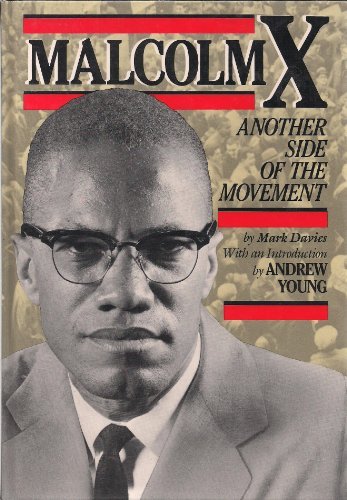-
A Graphic History of the Civil Rights Movement
Gary Jeffrey, Nick Spender, John Aggs, Nana Li, Emanuele Boccanfuso
Library Binding (Gareth Stevens Pub Learning library, Aug. 1, 2012)None W
W
-
Stokely Carmichael: The Story of Black Power
Jacqueline Johnson
Library Binding (Silver Burdett Pr, Nov. 1, 1990)A biography of the man who made famous the words "Black Power" as he fought for the rights of Black people in this country
-
Ella Baker: A Leader Behind the Scenes
Shyrlee Dallard
Paperback (Silver Burdett Pr, Sept. 1, 1990)Examines the life of the civil rights worker who organized for freedom and was a key figure in the formation of civil rights organizations
-
Rosa Parks and the Montgomery Bus Boycott
Gary Jeffrey, Nick Spender
Library Binding (Gareth Stevens Pub Learning library, Aug. 1, 2012)The Montgomery bus boycott was a pivotal event that launched the civil rights movement and helped transform American society. This epic tale of courage and peaceful resistance began with a simple No spoken by an African American seamstress. When Rosa Parks, exhausted after a long day at work, refused to give up her bus seat for a white man, she defied the strict segregation laws that made blacks second-class citizens. What followed was a test of courage and resolve that ultimately reshaped the nation. Using powerful illustrations and accessible text, this exciting graphic novel tells the story of actions, arrests, and the dramatic events that followed. O
O
-
The Story of the Little Rock Nine and School Desegregation in Photographs
David Aretha
Paperback (Enslow Publishers, Jan. 1, 2014)In September 1957, nine brave African-American students attempted to do something that had not been done in the segregated South—integrate a public school. Until 1957, black students could not attend school with white students, and black schools were often inferior to white schools. However, in the face of hatred, protest, and violence, these courageous students, who came to be known as the Little Rock Nine, led the charge for change. Through riveting primary source photographs, author David Aretha examines this critical time in the Civil Rights Movement. W
W
-
The Story of the Birmingham Civil Rights Movement in Photographs
David Aretha
Paperback (Enslow Publishers, Jan. 1, 2014)Martin Luther King, Jr., called Birmingham, Alabama, the most segregated city in America. In 1963, he and other civil rights leaders believed it was time to change that. With marches and protests throughout the city, civil rights activists hoped the movement would draw national attention. Hundreds of young African Americans joined the cause, marching for equal rights. Angry segregationists reacted—violently. And it would play out in newspapers and on television screens across the country. Through dramatic primary source photographs, author David Aretha explores this crucial struggle of the Civil Rights Movement. U
U
-
The Story of the Birmingham Civil Rights Movement in Photographs
David Aretha
Library Binding (Enslow Publishers, Jan. 1, 2014)Martin Luther King, Jr., called Birmingham, Alabama, the most segregated city in America. In 1963, he and other civil rights leaders believed it was time to change that. With marches and protests throughout the city, civil rights activists hoped the movement would draw national attention. Hundreds of young African Americans joined the cause, marching for equal rights. Angry segregationists reacted—violently. And it would play out in newspapers and on television screens across the country. Through dramatic primary source photographs, author David Aretha explores this crucial struggle of the Civil Rights Movement. Z
Z
-
The Story of the Little Rock Nine and School Desegregation in Photographs
David Aretha
Library Binding (Enslow Publishers, Jan. 1, 2014)In September 1957, nine brave African-American students attempted to do something that had not been done in the segregated South—integrate a public school. Until 1957, black students could not attend school with white students, and black schools were often inferior to white schools. However, in the face of hatred, protest, and violence, these courageous students, who came to be known as the Little Rock Nine, led the charge for change. Through riveting primary source photographs, author David Aretha examines this critical time in the Civil Rights Movement. U
U
-
Fannie Lou Hamer: From Sharecropping to Politics
David Rubel, Andrew Young
Library Binding (Silver Burdett Pr, Nov. 1, 1990)Follows the life of one of the first Black organizers of voter registration in Mississippi Y
Y
-
Act Up!: The War Against HIV in the LGBTQ+ Community
Rita Santos
Paperback (Rosen Young Adult, Jan. 15, 2019)The prejudice of the U.S. government and medical community allowed a disease that could have been contained to spread into a global pandemic. Readers will follow this devastating disease from its recently refuted origins in gay communities all the way to the current medical developments. This book will also describe how a powerful LGBTQ+ activist movement diverted its attention to the wreckage caused by the HIV and AIDS crisis of the 1980s and 90s. The history of disease is one that commonly receives too little attention in curricula, yet it has a huge impact on the development of our society.
-
Malcolm X: Another Side of the Movement
Mark Davies
Library Binding (Silver Burdett Pr, Nov. 1, 1990)A biography of the Afro-American who led a movement to unite Black people thoughout the world
-
Malcolm X: Another Side of the Movement
Mark Davies
Paperback (Silver Burdett Pr, Sept. 1, 1990)A biography of the Afro-American who led a movement to unite Black people thoughout the world. W
W